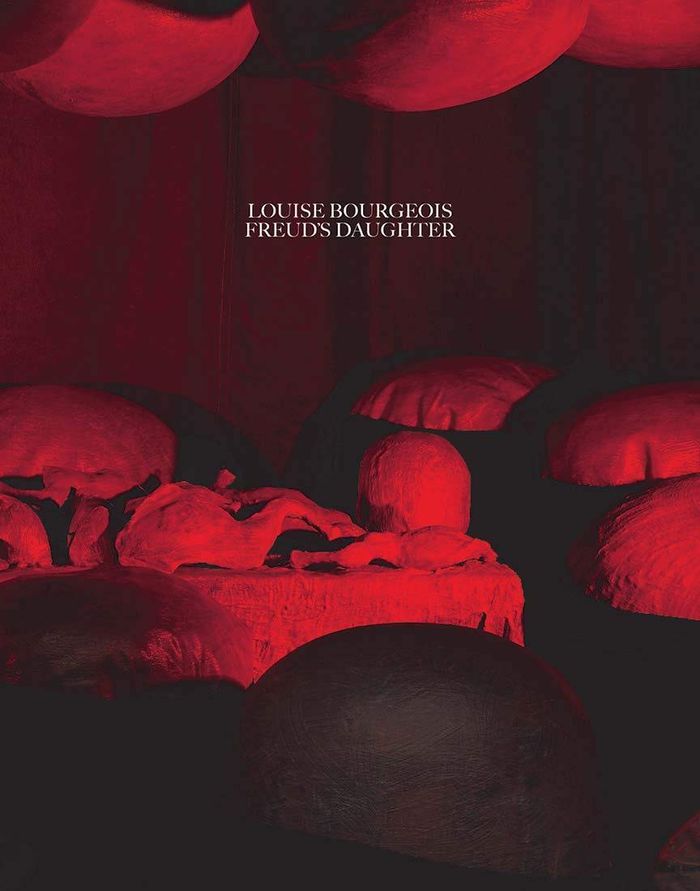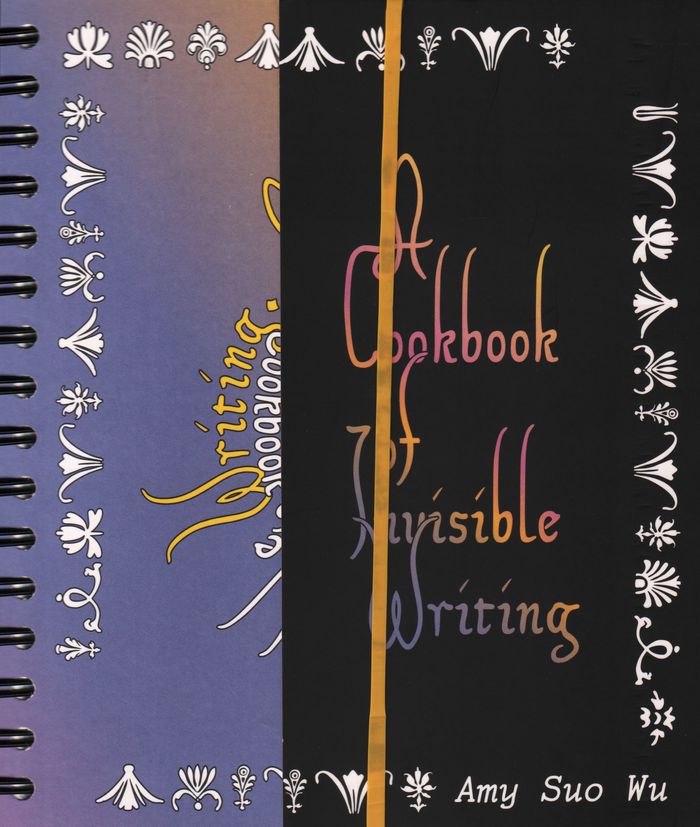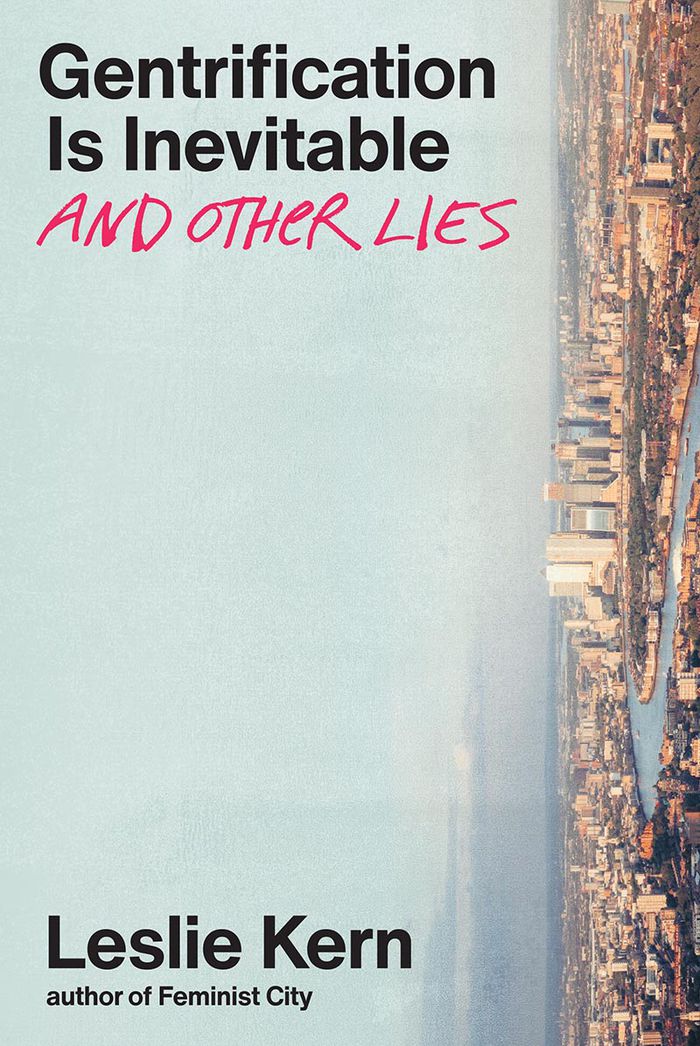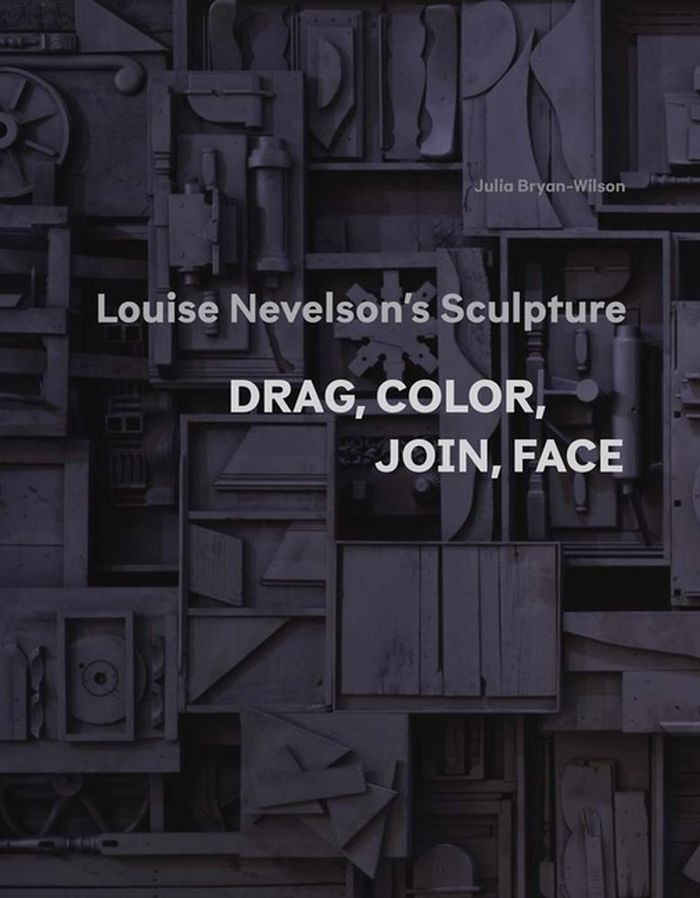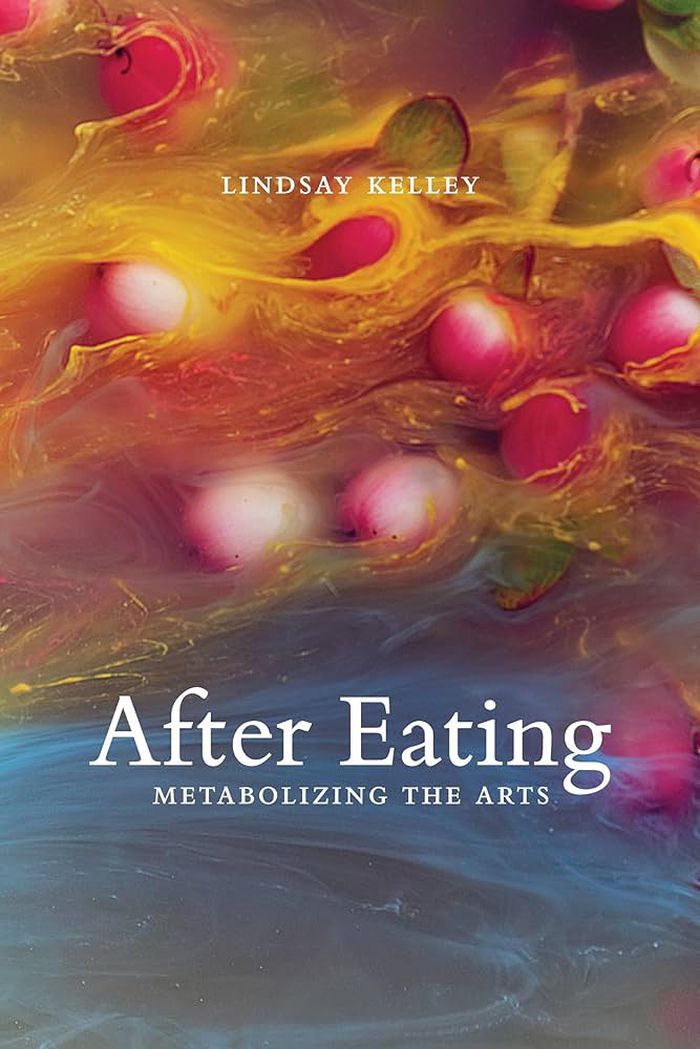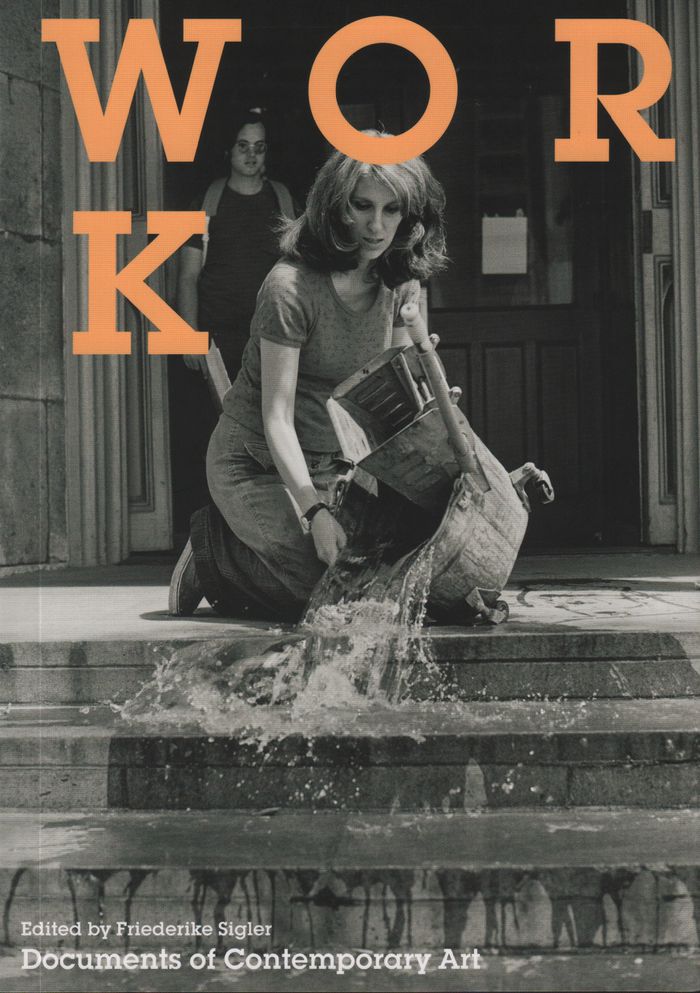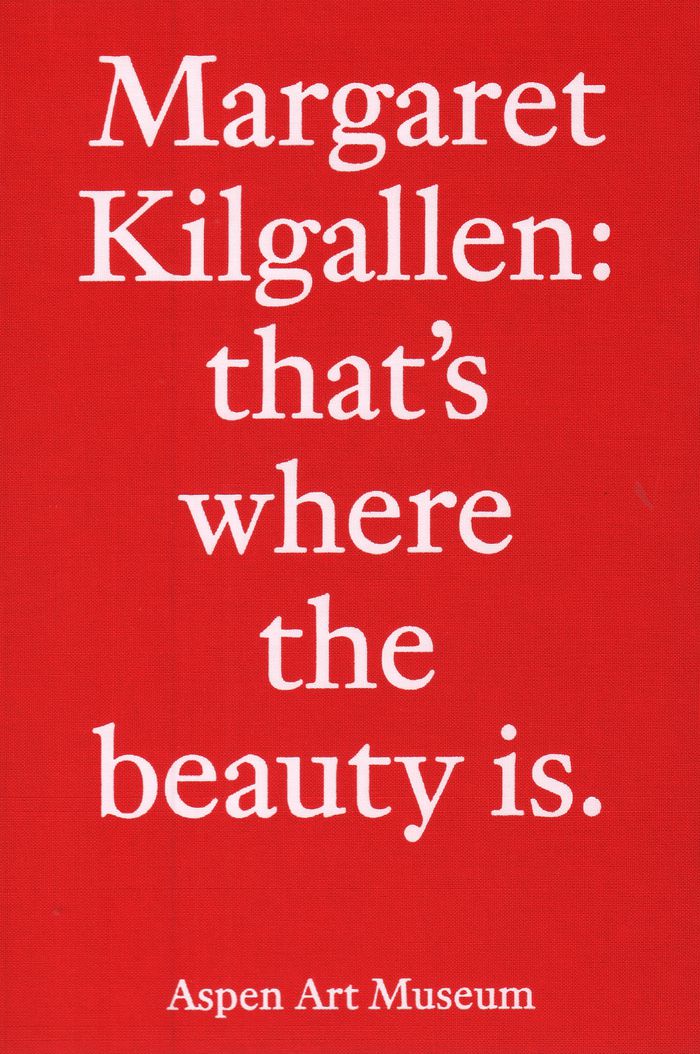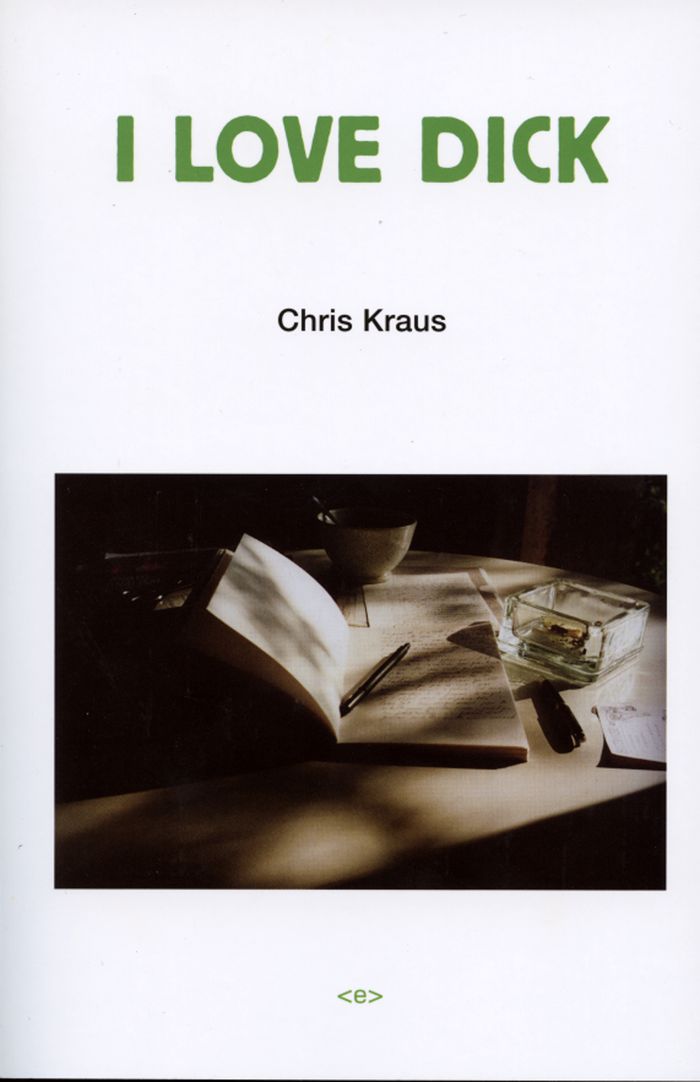$64.95
(disponible sur commande)
Résumé:
An exploration of the art and writing of Louise Bourgeois through the lens of her relationship with Freudian psychoanalysis. From 1952 to 1985, Louise Bourgeois (1911–2010) underwent extensive Freudian analysis that probed her family history, marriage, motherhood, and artistic ambition—and generated inspiration for her artwork. Examining the impact of psychoanalysis on(...)
Louise Bourgeois: Freud's daughter
Actions:
Prix:
$64.95
(disponible sur commande)
Résumé:
An exploration of the art and writing of Louise Bourgeois through the lens of her relationship with Freudian psychoanalysis. From 1952 to 1985, Louise Bourgeois (1911–2010) underwent extensive Freudian analysis that probed her family history, marriage, motherhood, and artistic ambition—and generated inspiration for her artwork. Examining the impact of psychoanalysis on Bourgeois’s work, this volume offers insight into her creative process. Philip Larratt-Smith, Bourgeois’s literary archivist, provides an overview of the artist’s life and work and the ways in which the psychoanalytic process informed her artistic practice. An essay by Juliet Mitchell offers a cutting-edge feminist psychoanalyst’s viewpoint on the artist’s long and complex relationship with therapy. In addition, a short text written by Bourgeois (first published in 1991) addresses Freud’s own relationship to art and artists. Featuring excerpts from Bourgeois’s copious diaries, rarely seen notebook pages, and archival family photographs, Louise Bourgeois, "Freud’s daughter" opens exciting new avenues for understanding an innovative, influential, and groundbreaking artist whose wide-ranging work includes not only renowned large-scale sculptures but also a plethora of paintings and prints.
$49.95
(disponible sur commande)
Résumé:
''A Cookbook of Invisible Writing,'' by Dutch artist, designer and teacher Amy Wu, is an introduction to analog steganography—a type of secret writing that is hidden in plain sight. This book serves as a starter pack to run workshops with groups who are interested in alternative forms of communication. It contains invisible ink recipes and other invisible communication(...)
Amy Wu: A cookbook of invisible writing
Actions:
Prix:
$49.95
(disponible sur commande)
Résumé:
''A Cookbook of Invisible Writing,'' by Dutch artist, designer and teacher Amy Wu, is an introduction to analog steganography—a type of secret writing that is hidden in plain sight. This book serves as a starter pack to run workshops with groups who are interested in alternative forms of communication. It contains invisible ink recipes and other invisible communication techniques that may be used to subvert surveillance and bypass censorship, but also inspire your community to develop poetic and playful forms of communication to nurture social bonds. In the tradition of esoteric manuals published on secret writing, this cookbook also channels the spirit of everyday access and the easy distribution and sharing of practical knowledge. Following Giambattista della Porta’s 1558 popular science book Natural Magic—one of the first major publications that detailed simple but diverse recipes of invisible inks for public consumption—this cookbook aims to bring this obscure field to a wider audience. The publication includes a critical essay about the history of surveillance through a feminist and postcolonial lens.
$23.95
(disponible en magasin)
Résumé:
First observed in 1950s London, and theorised by leading thinkers such as Ruth Glass, Jane Jacobs and Sharon Zukin, the devastating process of displacement now can be found in every city and most neighbourhoods and impacts the most vulnerable communities. Leslie Kern proposes an intersectional way at looking at the crisis that seek to reveal the violence based on class,(...)
Gentrification is inevitable, and other lies
Actions:
Prix:
$23.95
(disponible en magasin)
Résumé:
First observed in 1950s London, and theorised by leading thinkers such as Ruth Glass, Jane Jacobs and Sharon Zukin, the devastating process of displacement now can be found in every city and most neighbourhoods and impacts the most vulnerable communities. Leslie Kern proposes an intersectional way at looking at the crisis that seek to reveal the violence based on class, race, gender and sexuality. She argues that gentrification is not natural That it can not be understood in economics terms, or by class. That it is not a question of taste. That it can only be measured only by the physical displacement of certain people. Rather, she argues, it is an continuation of the setter colonial project that removed natives from their land. And it can be seen today is rising rents and evictions, transformed retail areas, increased policing and broken communities. Kern proposes a genuinely decolonial, feminist, queer, anti-gentrification. One that demands the right to the city for everyone and the return of land and reparations for those who have been displaced.
L'humain et la ville
$80.00
(disponible sur commande)
Résumé:
In this radical rethinking of the art of Louise Nevelson (1899–1988), Julia Bryan-Wilson provides a long-overdue critical account of a signature figure in postwar sculpture. A Ukraine-born Jewish immigrant, Nevelson persevered in the male-dominated New York art world. Nonetheless, her careful procedures of construction—in which she assembled found pieces of wood into(...)
Louise Nevelson Sculpture: Drag, color, join, face
Actions:
Prix:
$80.00
(disponible sur commande)
Résumé:
In this radical rethinking of the art of Louise Nevelson (1899–1988), Julia Bryan-Wilson provides a long-overdue critical account of a signature figure in postwar sculpture. A Ukraine-born Jewish immigrant, Nevelson persevered in the male-dominated New York art world. Nonetheless, her careful procedures of construction—in which she assembled found pieces of wood into elaborate structures, usually painted black—have been little studied. Organized around a series of key operations in Nevelson’s own process (dragging, coloring, joining, and facing), the book comprises four slipcased, individually bound volumes that can be read in any order. Both form and content thus echo Nevelson’s own modular sculptures, the gridded boxes of which the artist herself rearranged. Exploring how Nevelson’s making relates to domesticity, racialized matter, gendered labor, and the environment, Bryan-Wilson offers a sustained examination of the social and political implications of Nevelson’s art. The author also approaches Nevelson’s sculptures from her own embodied subjectivity as a queer feminist scholar. She forges an expansive art history that places Nevelson’s assemblages in dialogue with a wide array of marginalized worldmaking and underlines the artist’s proclamation of allegiance to blackness.
$54.00
(disponible sur commande)
Résumé:
Food appears everywhere in the arts. But what happens after viewers carry food away in the intestinal networks activated by social practice art, the same way digestion turns food into a body? Exploring the emerging field of metabolic arts, "After eating" claims digestion and metabolism as key cultural, creative, and political processes that demand attention. Taking an(...)
After eating: Metabolizing the arts
Actions:
Prix:
$54.00
(disponible sur commande)
Résumé:
Food appears everywhere in the arts. But what happens after viewers carry food away in the intestinal networks activated by social practice art, the same way digestion turns food into a body? Exploring the emerging field of metabolic arts, "After eating" claims digestion and metabolism as key cultural, creative, and political processes that demand attention. Taking an artist-centered approach to nutrition, Lindsay Kelley cultivates a neglected middle ground between the everyday and the scientific, using metabolism as a lens through which to read and write about art. Divided into two parts and full of playful chapter titles such as "Food Babies" and "Poop Circus," After Eating investigates multiple facets of the sociocultural implications of body image and body process in body art from the 1970s to the present. By engaging the notion of "after" as an artistic homage or tribute, metabolism moves beyond the cell to transform into a method for responding to the most difficult cultural, philosophical, and political challenges of the contemporary moment. Metabolic reading rethinks feminist, queer, bioart, installation, and performance projects, providing artists, students, and teachers with new pathways into art theory.
Bouffe
Movements & moments
$34.95
(disponible sur commande)
Résumé:
In 1930s Bolivia, self-described Anarchist Cholas form a libertarian trade union. In the Northern Highlands of Vietnam, the songs of one girl’s youth lead her to a life of activism. In the Philippines, female elders from Kalinga blaze a trail when pushed into impromptu protest. Equally striking accounts from Brazil, Chile, Ecuador, India, Nepal, Peru and Thailand weave a(...)
Movements & moments
Actions:
Prix:
$34.95
(disponible sur commande)
Résumé:
In 1930s Bolivia, self-described Anarchist Cholas form a libertarian trade union. In the Northern Highlands of Vietnam, the songs of one girl’s youth lead her to a life of activism. In the Philippines, female elders from Kalinga blaze a trail when pushed into impromptu protest. Equally striking accounts from Brazil, Chile, Ecuador, India, Nepal, Peru and Thailand weave a tapestry of trauma and triumph, shedding light on not-too-distant histories otherwise overlooked. Indigenous Peoples all over the world have always had to stand their ground in the face of colonialism. While the details may differ, what these stories have in common is their commitment to resistance in a world that puts profit before respect, and western notions of progress before their own. Movements and Moments is an introductory glimpse into how Indegenous Peoples tell these stories in their own words. From Southeast Asia to South America, vibrant communities must grapple with colonial realities to assert ownership over their lands and traditions. This project was undertaken in cooperation with the Goethe-Institut Indonesien in Jakarta. These stories were selected from an open call across 42 countries to spotlight feminist movements and advocacies in the Global South.
Illustration
Work
$33.50
(disponible sur commande)
Résumé:
Warhol’s Factory of the 1960s, Minimalism’s assembly-line aesthetics, conceptual and feminist concern with workers’ conditions in the 1970s—these are among the antecedents of a renewed focus on the work of art: labor as artistic activity, as artistic method and as object of artistic engagement. In 2002, the “Work Ethic” exhibition curated by Helen Molesworth at the(...)
Work
Actions:
Prix:
$33.50
(disponible sur commande)
Résumé:
Warhol’s Factory of the 1960s, Minimalism’s assembly-line aesthetics, conceptual and feminist concern with workers’ conditions in the 1970s—these are among the antecedents of a renewed focus on the work of art: labor as artistic activity, as artistic method and as object of artistic engagement. In 2002, the “Work Ethic” exhibition curated by Helen Molesworth at the Baltimore Museum of Art took its cue from recent art to spotlight this earlier era of artistic practice in which activity became as valid as, and often dispensed with, object-production. Revealed through this prism was “dematerialized” art’s close and critical relation to the emergent information age’s criteria of management, production and skill. By 2015, the Venice Biennale reflected artists’ wider concern with global economic and social crises, centered on exploitative and precarious worlds of employment. Yet while art increasingly engages with human travail, work’s significance in itself is seldom addressed by critics. This anthology explicitly investigates work in relation to contemporary art, surveying artistic strategies that grapple with the complexities of being an art worker in the new economy, a postproducer, a collaborator, a fabricator, a striker, an ethical campaigner, or would-be transformer of labor from oppression to liberation.
Théorie de l’art
$69.95
(disponible sur commande)
Résumé:
"Margaret Kilgallen: that’s where the beauty is". is published on the occasion of Kilgallen’s first posthumous museum exhibition, and the largest presentation of her work in more than a decade. Using the artist’s exhibition history as a chronological tool, "that’s where the beauty is". examines Kilgallen’s roots in histories of printmaking, American and non-Western folk(...)
décembre 2019
Margaret Kilgallen: that's where the beauty is
Actions:
Prix:
$69.95
(disponible sur commande)
Résumé:
"Margaret Kilgallen: that’s where the beauty is". is published on the occasion of Kilgallen’s first posthumous museum exhibition, and the largest presentation of her work in more than a decade. Using the artist’s exhibition history as a chronological tool, "that’s where the beauty is". examines Kilgallen’s roots in histories of printmaking, American and non-Western folk history and folklore, and feminist strategies of representation, expanding the narrative around her work beyond her association with the Bay Area Mission School and the "Beautiful Losers" artists. Kilgallen’s graphic, schematic style came from a deep engagement with the handmade in wildly divergent forms—from folk art to letterpress printing to freight train graffiti, among many other sources. “I like things that are handmade and I like to see people's hand in the world anywhere in the world,” she said, embracing the idiosyncrasies and imperfections that come from hand craft. “I think that’s where the beauty is.” Kilgallen’s work, in form and content, celebrates the handmade, making heroes and heroines of those who live and work in the margins and challenging traditional gender roles, hierarchies and mainstream culture.
I love Dick
$22.95
(disponible sur commande)
Résumé:
In "I Love Dick", published in 1997, Chris Kraus, author of Aliens & Anorexia, Torpor, and Video Green, boldly tore away the veil that separates fiction from reality and privacy from self-expression. It's no wonder that "I Love Dick" instantly elicited violent controversies and attracted a host of passionate admirers.The story is gripping enough: in 1994 a married, failed(...)
I love Dick
Actions:
Prix:
$22.95
(disponible sur commande)
Résumé:
In "I Love Dick", published in 1997, Chris Kraus, author of Aliens & Anorexia, Torpor, and Video Green, boldly tore away the veil that separates fiction from reality and privacy from self-expression. It's no wonder that "I Love Dick" instantly elicited violent controversies and attracted a host of passionate admirers.The story is gripping enough: in 1994 a married, failed independent filmmaker, turning forty, falls in love with a well-known theorist and endeavors to seduce him with the help of her husband. But when the theorist refuses to answer her letters, the husband and wife continue the correspondence for each other instead, imagining the fling the wife wishes to have with Dick. What follows is a breathless pursuit that takes the woman across America and away from her husband—and far beyond her original infatuation into a discovery of the transformative power of first person narrative.I Love Dick is a manifesto for a new kind of feminist who isn't afraid to burn through her own narcissism in order to assume responsibility for herself and for all the injustice in world—and it's a book you won't put down until the author's final, heroic acts of self-revelation and transformation.
Littérature et poésie
livres
Description:
321 pages : illustrations (chiefly color), portraits, facsimiles, plans ; 24 cm
[Bruxelles] : Les Impressions Nouvelles, [2023], ©2023
L'architecte fantôme : à la recherche d'Octave Van Rysselberghe / Françoise Levie.
Actions:
Exemplaires:
Description:
321 pages : illustrations (chiefly color), portraits, facsimiles, plans ; 24 cm
livres
[Bruxelles] : Les Impressions Nouvelles, [2023], ©2023
